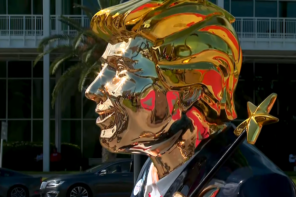1. The Passing of a Towering Figure
B. K. S. Iyengar died on August 20, 2014 at the age of 95. Iyengar played a central role in constructing and popularizing modern postural yoga, a collection of modern systems composed of some combination of posture synchronized with the breath and found in a variety of forms in nearly every urban area across the world. Iyengar’s Light on Yoga (1966) has served as a standard reference on postural yoga since its publication. His influence on the global popularization of yoga is measureless, and the students he left behind are countless.
2. Yoga For All
Many yoga advocates expressed increased concern about the disparity in access to yoga and its concomitant near absence among disenfranchised populations despite the many evidence-based claims regarding its physical and mental health benefits. In 2014, many non-profit organizations, including Yoga 4 Change, the Prison Yoga Project, Yoga Behind Bars, and the Africa Yoga Project to name just a few, made yoga more accessible to at-risk youth, veterans, prisoners, and those suffering from substance abuse.
3. Take Back the Yoga
Prime Minister of India Narendra Modi appointed Shipad Yesso Naik the first Minister of Ayurveda, Yoga and Naturopathy, Unani, Siddha and Homeopathy (AYUSH) as a part of a larger reorganization of his cabinet. Modi and Naik share common goals: define yoga as authentically and originally Indian, reclaim yoga for India from illegitimate co-opters across the world, and make yoga readily available to Indians across the nation. In short, reclaiming yoga for India became a central part of Modi’s nationalist agenda.
4. High Yoga
After debuting from October 2013 to January 2014 at the Smithsonian Institution’s Arthur M. Sackler Gallery, the “Yoga: The Art of Transformation” exhibition travelled to the San Francisco Asian Art Museum and finally to the Cleveland Museum of Art. The exhibition served as the first major art survey of yoga in the United States and provided visual representations of yoga’s complex, dynamic history, ranging from philosopher-ascetics turning inward in pursuit of salvation through realization of the true self; to ecstatic devotees turning outward in pursuit of divine union with the Lord Krishna or the Lord Shiva; to sinister villains channeling bodily energy in pursuit of temporal power; as well as modern practitioners of postural yoga. This diversity of images invited audiences to consider the multitude of yoga forms as well as both reverent and ambivalent reactions to yoga throughout its history.
5. The Rise of Ramdev’s Homophobic Yoga
Popular Indian yoga advocate Baba Ramdev, who recently suggested that yoga could be useful for curing homosexuality and who spoke in favor of the Indian government’s criminalization of gay sex, wielded more power, influence, and authority than ever before. During Prime Minister Narendra Modi’s election campaign, Ramdev served as a major source of support, and once elected, Modi met with Ramdev and discussed the guru’s personal policy concerns. Soon after their meeting, the Indian government provided central security for Ramdev, who is now protected by a large, round-the-clock team of Central Reserve Police Force personnel. And Modi’s newly appointed Minister of Ayurveda, Yoga and Naturopathy, Unani, Siddha and Homeopathy (AYUSH), Shipad Yesso Naik, credited Ramdev for having made major advances in popularizing yoga in India, pledging that the ministry would provide “all possible support” for Ramdev in his work on yoga.
6. The Seahawks Win the Super Bowl
The yoga community celebrated the Seahawks’ victory, tying it to the team’s recent addition of yoga to its routine. Ever since a widely read article in ESPN The Magazine that showed an image of Seahawks quarterback Russell Wilson seated in the lotus posture, the team had become celebrated among yoga advocates. This high-profile development served to further universalize yoga, suggesting it’s not just for slight, suburbanite women, but also big burly men.
7. The “Yoga Tax”
In Washington D. C., yoga was newly subjected to a tax. Though the tax has been popularly referred to as the “yoga tax,” the Office of Tax and Revenue’s extension actually applies to any health club business, defined as “a fitness club, fitness center, or gym the purpose of which is physical exercise.” As a part of a larger movement across the country opposing government regulation of yoga, some D. C. yoga advocates opposed the new tax, arguing that the goal of yoga cannot be reduced to mere physical exercise. Yet lawmakers insisted that the 5.75 percent sales tax extension did indeed apply to yoga.
8. Yogaphobia
Fear of Yoga continued to flourish. To list just a few 2014 incidents: Albert Mohler cited Indiana University religious studies scholar Candy Gunther Brown’s expertise—in 2013, Brown testified in a high-profile court case against allowing yoga in Encinitas, California public schools since it, according to Brown, promotes Hinduism—in support of his own argument that yoga is dangerous for Christians. In an op-ed published in John Brown University’s newspaper, The Threefold Advocate, faculty member Deborah Dana warned students about yoga, arguing “yoga has its roots in the worship of demonic Hindu gods.” And, in County Donegal, Ireland, Father Padraig O’Baoill warned his parishioners against “endangering” their souls by practicing yoga, which he suggested is “unsavoury.”
9. Awake Awakens Moviegoers to Yogananda’s Vision
Awake, a documentary about the life of Paramahansa Yogananda, author of the famous Autobiography of a Yogi, was released in October 2014. The film tells the important story of how Indian-born Yogananda travelled in 1920 to the United States and established the Self-Realization Fellowship, a yoga organization that has attracted large numbers of disciples from all over the world to this day. The film serves as a reminder that modern yoga has not always been about the stretching and muscle-building postures meant to function as fitness routines that are so often associated with yoga in the popular imagination. Yogananda introduced Kriya Yoga, believed to be the scientific path to the experience of God, and that path is as much about Christ consciousness as Krishna consciousness. This is a hybrid product of Hindu, Christian, and modern ideas about the nature of God, the nature of the Self, and the nature of the human body.
10. Yoga “UN-Bound”
In his first speech to the United Nations General Assembly on September 27, 2014, Narendra Modi called for June 21 to serve as International Yoga Day. Nearly two hundred countries, including the United States, Canada, and China, expressed their support for the proposition, and, on December 11, 2014, the General Assembly approved by consensus a resolution establishing June 21 as International Day of Yoga.





